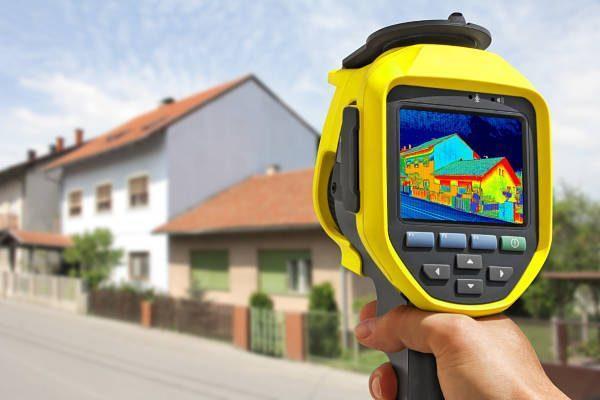Thermography
Our thermographers use thermography to detect thermal defects as well as air leakage in building envelopes.
Infrared (meaning far red) is the name given to the part of the electromagnetic spectrum that occurs just beyond the red end of the visible light spectrum. Its properties are similar in terms of reflection, refraction and diffraction to those of visible light.
All matter emits infrared radiation related to its temperature above absolute zero (-273°C). The warmer the body is, the greater the quantity of infrared energy emitted. Temperature also governs the wavelength of the infrared energy emitted. Warmer objects generally emit shorter wavelength infrared radiation compared to that emitted by cooler objects. Objects that are cooler than 500°C emit infrared in the longwave more than they do in the shortwave region of the spectrum.

An infrared camera is a device that can detect the various levels of infrared emission from the surface of an object. It produces a visual ‘thermal’ image of the object viewed. Radiometer type cameras allow measurement of the various temperatures. By employing a long wave infrared imaging radiometer it is then possible to map and quantify the surface temperatures prevalent across the surfaces of buildings, electrical and mechanical components and process plant. SK/AD uses a longwave infrared camera that can resolve surface temperatures to less than 0.1°C between 10 and 30°C with a total range of –20°C and 500°C.
